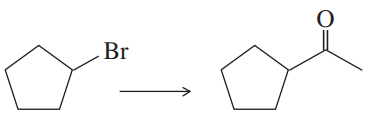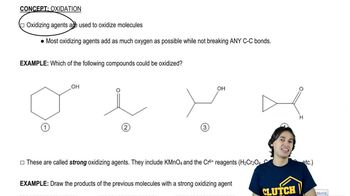Show how you would accomplish the following synthetic conversions by adding an organolithium reagent to an acid.
(d) phenylacetic acid → 3,3-dimethyl-1-phenylbutan-2-one

 Verified step by step guidance
Verified step by step guidance Verified video answer for a similar problem:
Verified video answer for a similar problem:



 0:24m
0:24mMaster Intro to Predict the Product with a bite sized video explanation from Johnny
Start learning